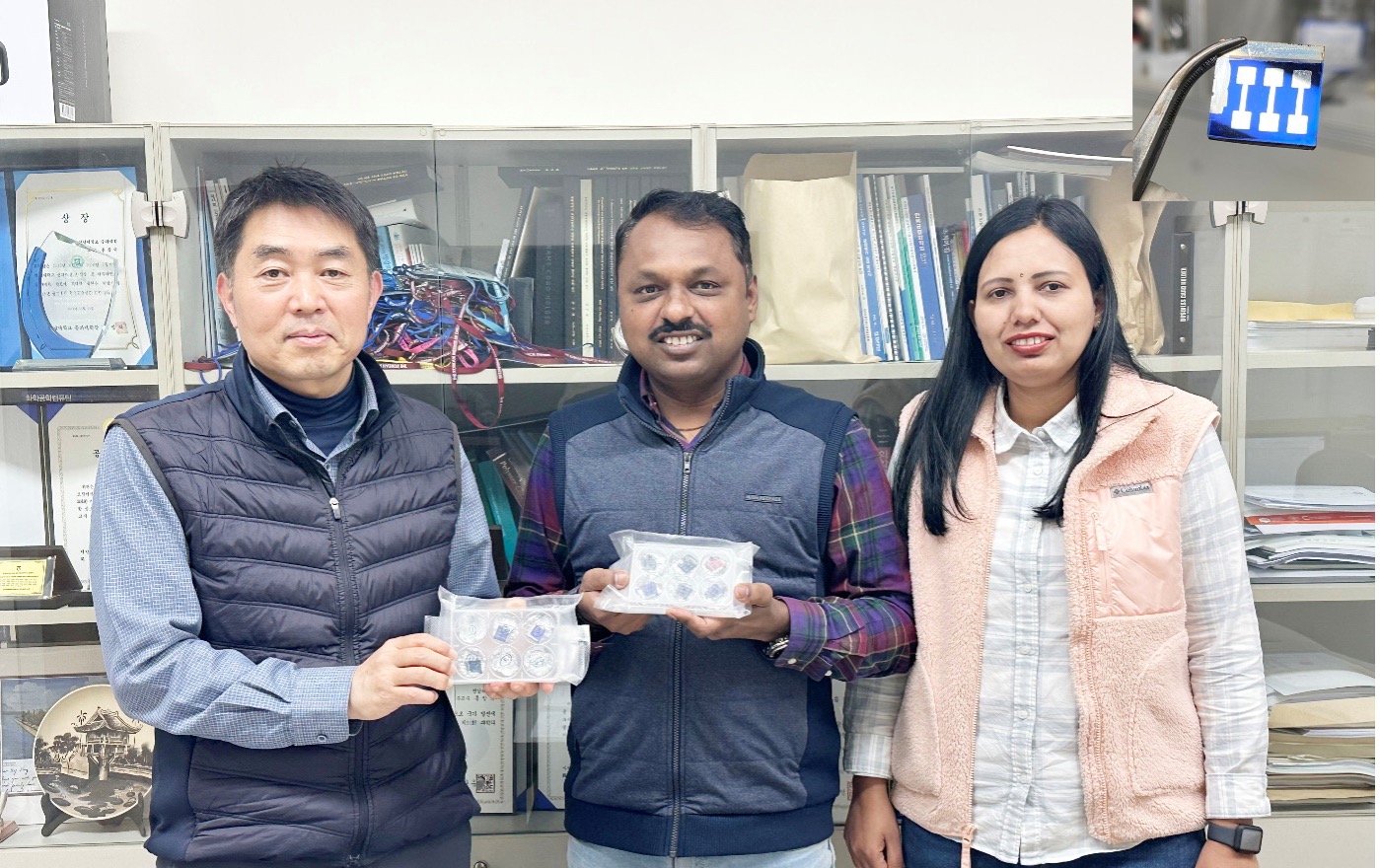| Nov 30, 2023 | |
Open-air-processed perovskite tandem solar cells at 23% efficiency |
|
| (Nanowerk Spotlight) Silicon has been the undisputed champion of solar cell materials, with laboratory versions now able to convert over 29% of sunlight into electricity. But an upstart technology based on metal halide perovskites is catching up fast. Leaps in performance over the last decade have brought perovskite solar cells to over 25% efficiency in the lab, nearing the practical limits of silicon. | |
| Now researchers from South Korea’s Chonnam National University have reported perovskite-organic hybrid tandem solar cells with 23.07% efficiency processed entirely in open air, bringing the technology a big step closer to economic viability. | |
| Their findings have been published in Energy & Environmental Science ("All-inorganic halide perovskites for air-processed “n-i-p” monolithic perovskite/organic hybrid tandem solar cells exceeding 23% efficiency"). | |
| Since 2012, lead halide perovskites have risen from obscurity to achieve remarkable performance gains not seen since the early days of solar research. However, commercializing the young technology has remained an elusive goal. Perovskites degrade quickly when exposed to heat, moisture and light. Manufacturing solar panels requires stabilizing the notoriously unstable compounds. | |
| Researchers have largely relied on meticulously engineering the perovskite crystal structure itself for greater resilience. But these delicate handling steps add cost and complexity not suitable for mass production. “Recently, the focus has shifted toward all-solution processed solar cells due to their low energy consumption fabrication processes,” said first author Dr. Sawanta Mali. | |
| The team’s innovation, a dynamic hot air deposition technique, simplified the production process by eliminating the need for humidity-controlled environments. | |
| “Our approach demonstrates solution-processed absorbers with organic cation passivation reduce VOC loss down to 0.025 V, which is the lowest reported to date,” Sawanta explains to Nanowerk. “We have used fully air-processed ‘n-i-p’ front subcells in this process, which has led to a simplified approach toward commercialization with high reproducibility.” | |
 |
|
| Design of the modified normal “n-i-p” configuration for monolithic 2T-hybrid tandem solar cells devices typically free from complicated processes like atomic layer deposition (ALD) and/or a sputtered interconnecting layer (ICLs) and thermally evaporated C60 ETLs J–V curves of champion hybrid tandem solar cells based on modified configurations in different scan mode. (click on image to enlarge (Image courtesy of the researchers) | |
| Dr. Sawanta and colleagues fabricated both the front wide bandgap perovskite solar cell and the rear narrow bandgap organic solar cell layer in open air using a technique they call dynamic hot air deposition. They used a heat gun to crystallize metal halide salts spun onto the substrate directly from solution, avoiding problematic antisolvent baths. The researchers also employed novel chemical treatments to passivate each layer surface for effective charge transport. | |
| The resulting all-inorganic cesium-lead-halide perovskite gained greatly enhanced moisture resistance compared to standard lead hybrid perovskites with volatile organic components. This enhancement in moisture resistance marks a significant advancement over standard lead hybrid perovskites, which contain volatile organic components and are less stable. Metallic rubidium doping further stabilized the perovskite crystal structure. The water-based synthesis and ambient processing method also eliminated the need for costly specialized equipment. | |
| “It is well-known that the front perovskite subcell has a relatively strong absorber of visible light, peaking near ~450 nm, and presents a very high EQE over the whole visible range which compensates the deficiency of the relatively low EQE of the BHJs,” Sawanta notes regarding the tandem solar cell design. The perovskite layer captures higher energy visible photons, while the polymer bulk heterojunction cell absorbs lower energy infrared. | |
 |
|
| From left Prof. Chang Kook Hong, Dr. Sawanta S. Mali and Dr. Jyoti V. Patil showing the all-inorganic based hybrid tandem solar cells fabricated at the Polymer Energy Materials Laboratory, Chonnam National University, South Korea, which crossing 23% efficiency. Upper right inset shows photograph of fabricated hybrid tandem solar cell (Image: DaeWoon Park) | |
| The optimized devices combined a 1.87 eV rubidium-doped cesium-lead-halide perovskite front cell with a ternary polymer rear cell. This panchromatic tandem architecture reached a maximum 23.07% sunlight to electricity conversion efficiency. The open circuit voltage of 2.11 V significantly exceeds the 1.14 V typical of commercial silicon cells. Just as importantly, the cells retained over 90% of the peak performance after 600 hours of continuous simulated solar irradiation. By contrast, an unpassivated perovskite control cell dropped below half efficiency within 50 hours. | |
| “We also found that the control device is more stable at 65 °C and 85 °C thermal stress than at room temperature. This is likely due to a reduction in the moisture-induced phase decay pathway at elevated temperatures, as water molecules are desorbed from the surface,” Mali explains. Further encapsulation for moisture protection allowed even better operational longevity. | |
| The simplified ambient fabrication method also translated from 0.09 cm2 laboratory scale to over 21.82% efficiency for a practical 1 cm2 cell size. | |
| “Our findings suggest that implementing the hot-air method for all-inorganic perovskite front subcells and ternary OPV blend-based rear subcells with ‘n-i-p’ is a viable solution,” Mali concludes. The team is confident of approaching the 29.1% practical efficiency limit for the tandem solar cell architecture with further development. | |
| The exceptional efficiency and stability of ambient-processed perovskite-organic tandem cells puts the technology on track to achieve the ultra-low manufacturing costs required for widespread photovoltaic adoption. | |
 By
Michael
Berger
– Michael is author of three books by the Royal Society of Chemistry:
Nano-Society: Pushing the Boundaries of Technology,
Nanotechnology: The Future is Tiny, and
Nanoengineering: The Skills and Tools Making Technology Invisible
Copyright ©
Nanowerk LLC
By
Michael
Berger
– Michael is author of three books by the Royal Society of Chemistry:
Nano-Society: Pushing the Boundaries of Technology,
Nanotechnology: The Future is Tiny, and
Nanoengineering: The Skills and Tools Making Technology Invisible
Copyright ©
Nanowerk LLC
|
|
|
Become a Spotlight guest author! Join our large and growing group of guest contributors. Have you just published a scientific paper or have other exciting developments to share with the nanotechnology community? Here is how to publish on nanowerk.com. |
|
